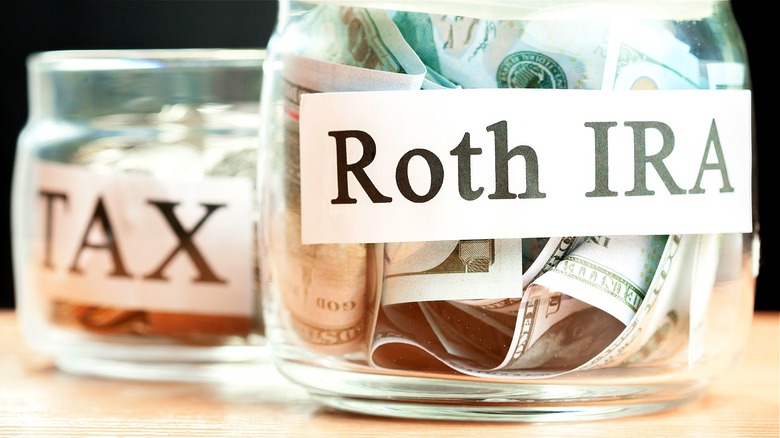Can You Deduct Losses From Your Roth IRA?
You no longer can deduct losses from your Roth IRA. The ability to do so ended in 2018, once the Tax Cuts and Jobs Act went into effect on January 1. This said, when you could deduct losses, there was only one way to do so, which was to close your Roth IRA account(s) — even those with gains.
The TCJA will expire at the end of 2025. Once it does, the general belief is that there will be a tax hike. With regard to existing IRA accounts, to avoid those potential tax hikes, you could convert your traditional IRA to a Roth IRA before 2025 closes. Doing so now will allow you to pay taxes on your investments at the current rates, and then, going forward, your money will grow tax-free. The hope always, of course, is that retirement investments result in gains rather than losses. As for pre-2018 Roth IRA losses, here's what you previously had to do in order to deduct them on your tax return.
How losses were deducted
When it was possible to deduct Roth IRA losses, taxpayers had one option: to withdraw the funds and close the accounts. (See our explainer on if it's okay to withdraw money from a Roth IRA.) The rule was that if you wished to deduct losses, you'd have to close all IRAs of the same type. Thus, you could keep any traditional IRA open, and still deduct losses from your Roth IRAs. To itemize the deduction, you'd have to:
-
File your taxes using Form 1040
-
Use Schedule A to figure out your itemized deduction(s)
-
Report the loss as a miscellaneous deduction
Another rule was that you could only deduct losses if your cost basis exceeded your balances. For Roth IRAs, the cost basis is equal to the account holder's contributions. So, for example, if your cost basis over the years was $15,000 and your withdrawn Roth IRA balances totaled $9,500, then your losses would be $6,500.
As a miscellaneous deduction, it also meant that the Roth IRA deduction was subject to the 2%-of- adjusted-gross-income limitation. That is, your final deduction would be determined after subtracting 2% of your adjusted gross income (or AGI). For example, say that your AGI was $75,000, and your Roth IRA losses were $6,500 (and this was the only miscellaneous item), the amount you'd list for miscellaneous deductions on Schedule A would be $5,000 ($6,500 − $1,500).
Roth IRA and taxes
The Tax Cuts and Jobs Act didn't only affect Roth IRA losses under miscellaneous deductions; it removed many other items that previously qualified, including union dues, tools and supplies used for work, and home-office expenses (for a part of a person's home principally used for business). For home offices, note that this referred to employees who worked remotely from home rather than self-employed individuals. A miscellaneous deduction that did survive the TCJA changes? Deducting gambling losses.
Another change the TCJA implemented was a higher standard deduction. Since the new standard deductions were in most cases higher than itemizing — considering how many had been restricted or done away with altogether — more taxpayers began to take the standard deduction when filing. It's assumed that once the TCJA expires in 2026, the number of taxpayers who itemize will increase.
For Roth IRAs, since it's funded with after-tax dollars, the money in it grows tax-free. Further, it doesn't require minimum distributions, unlike traditional IRAs, and future withdrawals trigger no tax penalty so long as they're made after the account holder is over 59 ½ years of age and the account has been open for five years. Thus, anyone who previously thought to close their Roth IRAs and deduct the losses, to avoid paying an early-withdrawal 10% penalty, they'd likely wait until they were past age 59 ½.


